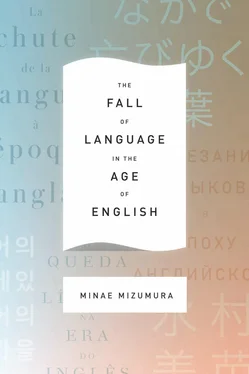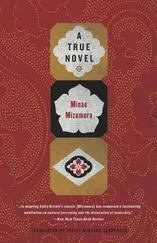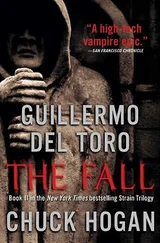True, some Japanese people around the same period did write in English, notably the Christian reformer and writer Uchimura Kanzō, as we have seen, and the government official and artist Okakura Tenshin (1862–1913). Westerners welcomed the former’s How I Became a Christian as gratifying proof of their religion’s universal validity, and the latter’s The Book of Tea (1906) as a source of wisdom embodied in the exotic tea ceremony. But a treatise on English literature by a Far Eastern man would have been unlikely to find a publisher. Even if Professor Hirota were promoted and thus given more time to write his magnum opus, his role from a global perspective would remain that of a translator introducing Western scholarship to Japan.
A character in Sanshirō who is Professor Hirota’s polar opposite is Nonomiya, the young physicist. In many ways, the two are similar. Nonomiya, too, is a man who transcends worldly matters. He, too, is content with low pay and goes about doing the same thing for ten long years, secluding himself in a cellar-like laboratory, staring into a telescope, and conducting research on the pressure exerted by light, a subject that seems remote from everyday life. He, too, is unknown to the general public. And yet there is a crucial difference between him and Professor Hirota: he is known to those around the world who are engaged in research similar to his. “Everyone in that field, even Westerners, knows the name of Nonomiya,” we are assured. “Nonomiya is celebrated in foreign countries.” As a scientist, Nonomiya not only reads but writes and publishes in English, for the language of science is close to the language of mathematics, the universal language par excellence. His writings can thus enter the chain of “texts to read.” This is why, even though he is a man with little worldly interest, he is highly sensitive to trends in his field. “Research nowadays moves fast; if you don’t stay alert, you’re quickly left behind,” he tells Sanshirō.
Sanshirō astutely grasps the difference between the two men:
Around Professor Hirota he felt easy and relaxed. Competition just didn’t seem to matter anymore. Nonomiya had an otherworldly air too, like the professor, but in his case lofty ambitions seemed to distance him from conventional desires. So when Sanshirō talked with Nonomiya one on one, he would start to feel that he too must hurry and do his share, make his contribution to the world of scholarship. He grew anxious. By contrast, Professor Hirota was tranquility itself. He was just a college language teacher and that was it — not a very nice thing to say, granted, but he hadn’t published any research. And yet he seemed totally unconcerned. That must be what put Sanshirō so much at ease.
That Professor Hirota should remain “the Great Darkness”—a master of mere trivia — is structurally imposed by the futility of pursuing Western scholarship in Japanese, and that futility itself is imposed by the historical dynamics of modernity, manifesting itself in the linguistic asymmetry.
Not everyone is blessed with the kind of mind that allows him to spend his days in peace when entrapped in such a situation. Sōseki must have admired men who possessed such tranquility of mind, must have aspired to be like them. Yet he was no Hirota. He accepted the position on the faculty of English literature at Tokyo Imperial University, replacing Lafcadio Hearn — and thus becoming what he later sarcastically called a “captain of Western learning.”
Sōseki’s next step, however, was extraordinary. He tried to explore the only path that seemed meaningful and valid to him, the only path in which he would be more than a “captain of Western learning,” more than a transmitter of knowledge. The result was the notoriously hard to read book Theory of Literature ( Bungaku ron , 1907), a compilation of his lectures at the university from 1903 to 1905. The book begins with a rather startling declaration:
One can perhaps approach the form of literary substance with the expression (F + f). F here indicates impressions or ideas at the focal point of consciousness, while f signifies the emotions that attend them. In this case, the formula stated above signifies impressions and ideas in two aspects, that is to say, as a compound of [the] cognitive factor F (“large F”), and the emotional factor f (“small f”). 2
In other words, the impressions a reader receives from literature derive from the combination of F , which stands for cognitive function, and f , which stands for emotive function — a contention so basic that it is difficult either to agree or to disagree. It is less what he says than the way he says it that concerns us here. Sōseki had a highly analytical and scientific mind. In trying to teach English literature in the Japanese language to Japanese students, he tried to step outside not only English literature but also the literary language commonly used in discussing literature, and to address, in a most formalistic way, the fundamental question of what literature is.
What Sōseki avoided was repeating the ideas of Western teachers in Japanese and thus acting as a mere conduit. A good example of what he presumably did not want to do as a teacher can be found in Sanshirō . On Sanshirō’s first day of classes at the university, he waits for the professor to enter the classroom, his heart filled with awe. Then a “distinguished-looking old man, a foreigner” walks in and begins “to lecture in fluent English.” What does Sanshirō learn from this guru? He learns that the word “answer” derived from the Anglo-Saxon word “andswaru.” He learns the name of the village where Sir Walter Scott went to grammar school. In short, he learns things that are hardly relevant to Japanese people. It would not be worth Sōseki’s while to teach in Japanese if he only replicated this sort of class. It was the mission of him or someone like him — a person who could look at English literature from the outside — to relativize works in English as variants of literature’s universal formula.
Modern history forced Sōseki to become a formalist, more than a decade before the Russian formalists came on the scene. And yet he was unsatisfied with Theory of Literature , which he later called a “deformed corpse”: Why did he feel so bitter about it that he felt compelled to doubly degrade it, calling it not just a “corpse” but a “deformed corpse”? “Circumstances compelled me to give up my contemplated task long before it was completed. My Theory of Literature is thus not so much a memorial to my projected ‘lifework’ as its corpse — and a deformed corpse at that. It lies like the ruins of a city street that has been destroyed by an earthquake in the midst of its construction.” 3Was Sōseki frustrated by the limitation of pursuing academic learning in the Japanese language? We do not know. All we know is that he quit his teaching post after only four years. By that time, he had already earned a considerable reputation as a writer through works he wrote in his spare time, such as the satirical comic novel I Am a Cat ( Wagahai wa neko de aru , 1905–1906). The Asahi Shimbun offered him a full-time position as an in-house novelist who would write serially for the paper. His decision to walk away from what was then one of the most exalted positions in Japan, that of faculty member at Tokyo Imperial University, to become a full-time novelist created a sensation. Yet in fact, it symbolized a typical predicament of intellectuals in modern Japan: there was a structural necessity for bright minds to leave the university behind to write.
Let us go back to the beginning of Sanshirō when, during his train ride to Tokyo, Sanshirō tries to cheer himself with self-indulgent dreams. He would “do research in the library. Write books, win acclaim. Make his mother happy.” The novel ends a year later, when his first year of the university life has come to an end. What will become of Sanshirō now? Is he going to write books in academia, as he first dreamed of doing? Or, like Sōseki, is he going to leave the university behind to write books as a standard-bearer of national literature? I cannot read Sanshirō without wondering what the future holds for him.
Читать дальше












